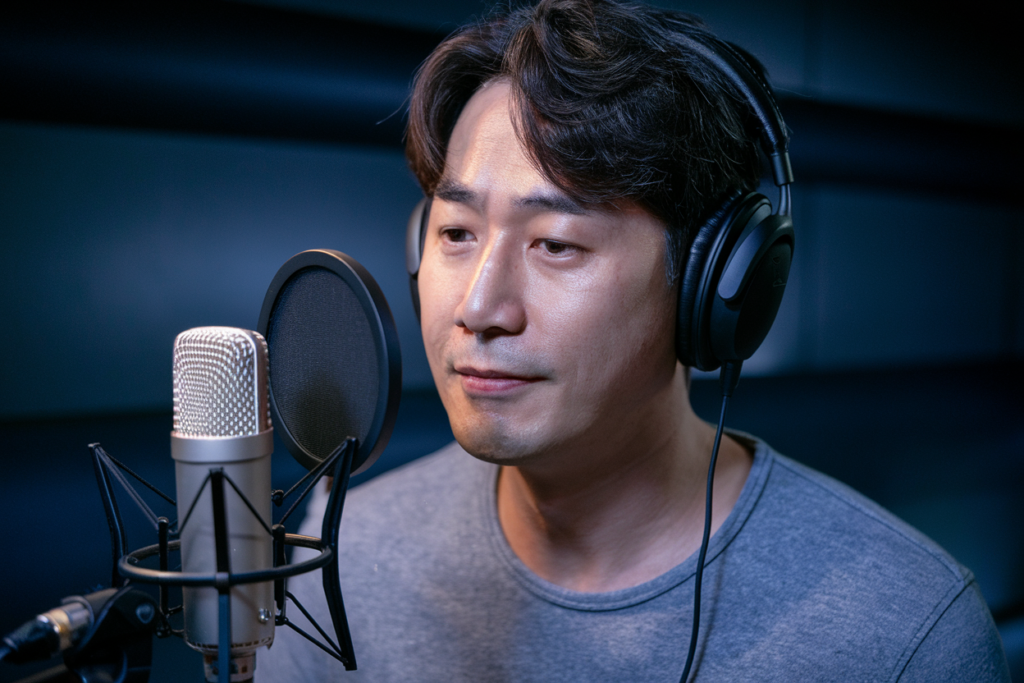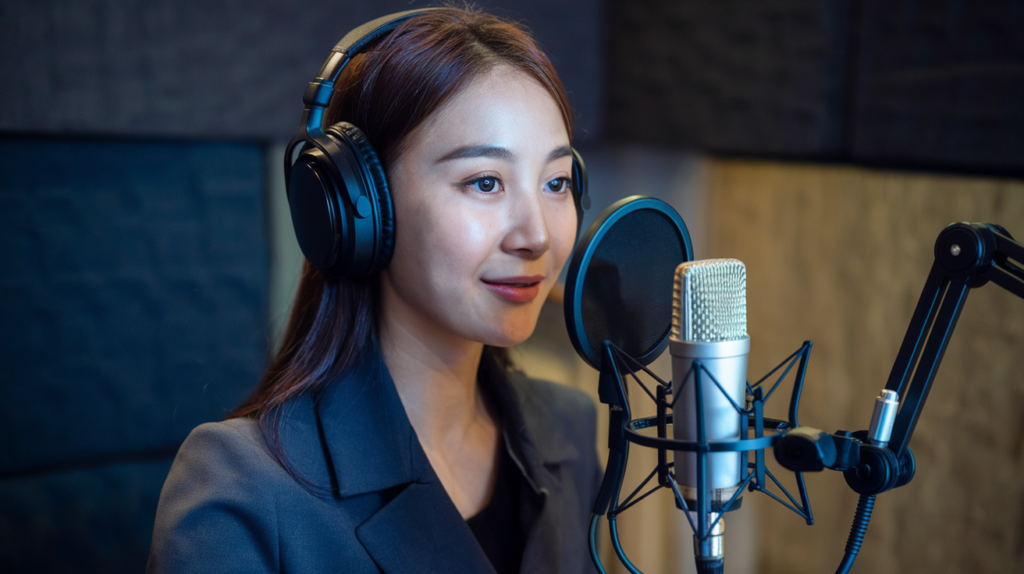Key Takeaways
- Importance of Quality Dubbing: Effective Korean dubbing is crucial for making content accessible and emotionally engaging for international audiences, enhancing the overall viewing experience.
- Common Issues Identified: Key challenges in Korean dubbing include mismatched lip sync, inconsistent character voices, and cultural context loss, all of which can detract from audience immersion.
- Technical Challenges: Audio quality and synchronization difficulties are significant hurdles in the dubbing process that require skilled voice actors and optimal recording conditions to overcome.
- Viewer Preferences: Audience perceptions reveal a divide between preferences for subtitles versus dubbing. While some viewers appreciate authentic performances in original languages, others favor dubbing for ease of engagement with visuals.
- Future Innovations: Advancements in technology, such as AI translation tools and improved audio processing techniques, promise to enhance the quality and efficiency of Korean dubbing moving forward.
- Role of Voice Actors: Talented voice actors play a pivotal role in successfully conveying emotions and cultural nuances through their performances, making them essential to effective dubbing projects.
Ever wondered why some Korean dubbing just doesn’t hit the mark? You’re not alone. As global interest in Korean media skyrockets, so do the challenges of translating emotions and cultural nuances into another language.
Korean dubbing can often fall short due to issues like mismatched voice acting or awkward translations that leave viewers scratching their heads. These common pitfalls can ruin an otherwise captivating show or film experience. If you want to dive deeper into these challenges and learn how they impact your favorite dramas and movies, keep reading! You’ll discover what makes effective dubbing essential for bringing stories to life across cultures.
Overview of Korean Dubbing
Korean dubbing plays a crucial role in making content accessible and enjoyable for international audiences. It enhances the viewing experience by ensuring that emotions and cultural nuances resonate with viewers.
Importance of Dubbing in Korean Media
Dubbing brings life to characters, allowing voice actors to convey their personalities effectively. The right voice talent can transform a script into an engaging narrative, helping audiences connect with stories on deeper levels. Accurate translations also matter; they keep dialogue authentic while preserving humor and emotion. When done well, dubbing fosters empathy and understanding across cultures.
Common Genres Requiring Dubbing
Several genres frequently utilize dubbing in Korean media, enhancing reach and appeal:
- Drama: Character-driven stories benefit from skilled voice artists who capture emotional depth.
- Animation: Animated features rely on vibrant voiceovers to bring animated characters to life, especially for younger viewers.
- Documentary: Informative content necessitates clear narration that engages audiences while delivering factual information.
- Film: Movies spanning various genres often require localization through dubbing to attract foreign markets.
Each genre presents unique challenges that underscore the importance of quality voice over talent in creating compelling audio experiences.
Common Issues in Korean Dubbing
Korean dubbing faces several challenges that affect the overall quality of the viewing experience. Understanding these common issues can help you appreciate the intricate work behind bringing your favorite dramas and movies to life.
Mismatched Lip Sync
Mismatched lip sync often disrupts immersion. When dialogue doesn’t align with character mouth movements, it detracts from believability. This issue arises when voice actors record their lines without precise timing, leading to awkward pauses or rushed delivery. Effective synchronization demands skilled voice talent who can adapt their performances to match visual cues seamlessly.
Inconsistent Character Voices
Inconsistent character voices create confusion for viewers. Characters may change dramatically between scenes due to different voice artists taking on roles or inadequate direction during recording sessions. A cohesive sound helps maintain audience engagement and emotional connection throughout a series or film. Reliable voice actors ensure consistent portrayal across episodes, allowing audiences to remain invested in character development.
Cultural Context Loss
Cultural context loss presents significant hurdles in dubbing Korean content for international audiences. Certain phrases or expressions may carry specific cultural meanings that don’t translate well into other languages. Skilled voiceover talent must navigate these nuances while maintaining authenticity and resonance with viewers. Respectful adaptation of dialogues ensures that humor, emotions, and cultural references don’t get lost in translation, enriching the overall experience for a global audience.
By recognizing these common issues within Korean dubbing, you gain insight into why high-quality voice talent plays an essential role in creating captivating audio experiences that resonate with viewers around the world.
Technical Challenges in Dubbing
Dubbing involves several technical challenges that can significantly impact the final product. Understanding these issues helps you appreciate the complexity behind creating a seamless viewing experience.
Audio Quality and Recording Environment
Audio quality plays a crucial role in dubbing. Poor recording environments lead to background noise, echo, or other distractions that can undermine voiceovers. You want crisp, clear audio that allows the voice talent’s performance to shine through without interference. Acoustic treatment of recording spaces ensures optimal sound capture, allowing voice actors to deliver their lines with precision and emotion. High-quality microphones and equipment also enhance clarity, making every nuance of the voiceover resonate with audiences.
Synchronization Difficulties
Synchronization poses another challenge during the dubbing process. The dialogue must match character lip movements for an authentic viewing experience. When timing is off, it disrupts immersion and can make scenes feel awkward or unnatural. Achieving perfect synchronization requires skilled voice actors who can deliver lines while considering pacing and expression. Often, adjustments are necessary after initial recordings to ensure that emotional beats align perfectly with visual cues on screen. This meticulous attention to detail makes all the difference in creating a compelling audio-visual connection for viewers.
By addressing these technical hurdles effectively, you create a more engaging experience that resonates well with audiences across cultures and languages.
Audience Perception of Dubbing
Viewer perceptions play a crucial role in the success of dubbing in Korean media. Understanding how audiences feel about voiceovers can help improve future productions and enhance viewer satisfaction.
Viewer Preferences for Subtitles vs. Dubbing
Many viewers express a strong preference for subtitles over dubbing, often citing concerns about the authenticity of performances. Some believe that original voice actors convey emotions more effectively than dubbed counterparts. Others appreciate the ability to hear the original language, feeling it adds an element of cultural richness. However, those who prefer dubbing argue that it allows easier engagement with visuals without the distraction of reading text on-screen. The debate continues as content creators strive to meet diverse audience needs while maintaining high-quality voice talent.
Feedback from Korean Viewers
Korean viewers provide valuable insights into their experiences with dubbing. Many appreciate when voice actors match character personalities and emotional tones, enhancing relatability and connection to stories. Conversely, mismatched or uninspired performances can lead to disappointment and disengagement from content. Furthermore, feedback highlights the importance of cultural nuances; effective translations can significantly impact how audiences perceive characters and plots. By focusing on skilled voice artists who understand these dynamics, producers can create a more immersive viewing experience that resonates deeply with local audiences.
The ongoing conversation around viewer perception emphasizes the need for quality in every aspect of production—from script translation to selecting talented voice actors—ensuring that each project meets audience expectations effectively.
Future of Korean Dubbing
The future of Korean dubbing holds exciting possibilities as technology and audience preferences evolve. Innovations in audio production, such as advanced recording techniques and software, enhance the overall quality and efficiency of voiceovers.
Innovations and Technological Advances
Emerging technologies greatly impact the dubbing landscape. Artificial intelligence (AI) tools streamline translation processes, enabling quicker adaptations without compromising accuracy. Enhanced audio processing can improve sound clarity, allowing voice actors to deliver compelling performances that resonate with audiences. Moreover, virtual reality (VR) and augmented reality (AR) are creating immersive experiences where dubbing plays a crucial role in storytelling. As these technologies develop, they promise to elevate the standards for Korean dubbing even further.
The Role of Voice Actors
Voice actors remain at the heart of successful dubbing projects. Their ability to convey emotions and personality traits through vocal performance is vital for engaging viewers effectively. Skillful voice talent not only matches character emotions but also adapts their delivery based on cultural nuances inherent in the original content. As global interest in Korean media continues to rise, talented voice artists will increasingly bridge cultural gaps by making stories relatable to diverse audiences. Investing in capable voice over talent ensures that every project captures the essence of its characters while maintaining authenticity across languages.
In this evolving landscape, prioritizing high-quality voiceovers will enhance viewer experiences and expand reach into international markets.
Conclusion
Navigating the complexities of Korean dubbing is essential for enhancing viewer experiences. As you explore your favorite dramas and films, understanding these common issues can deepen your appreciation for the art of voice acting.
Quality dubbing not only improves accessibility but also ensures that emotional nuances resonate with international audiences. With advancements in technology and an evolving landscape, the future holds promising improvements in this field. Prioritizing skilled voice talent will be key to overcoming current challenges and elevating the global presence of Korean media. Embrace these developments as they unfold and enjoy a richer viewing experience.
Frequently Asked Questions
What are the main challenges of Korean dubbing?
Korean dubbing faces several challenges, including mismatched voice acting, awkward translations, and inconsistent character voices. These issues can confuse viewers and detract from the emotional engagement of films and dramas. Additionally, cultural context often gets lost in translation, making effective dubbing crucial for conveying authentic narratives.
Why is quality dubbing important for international audiences?
Quality dubbing enhances accessibility and enjoyment for international viewers. It allows non-Korean speakers to engage with the content more easily while maintaining emotional depth and cultural nuances. Effective voice acting helps bridge language barriers, ensuring a richer viewing experience.
How do audience preferences affect Korean dubbing?
Viewer preferences significantly influence the success of Korean dubbing. Many audiences prefer subtitles for authenticity but appreciate dubbed versions for ease of understanding. Feedback indicates that matching voice actors’ performances to character personalities is essential in meeting viewer expectations.
What genres require Korean dubbing?
Common genres that require Korean dubbing include drama, animation, documentary, and film. Each genre presents unique challenges related to voice talent selection and synchronization issues that underscore the need for skilled professionals in adapting these works effectively.
What technological advancements are shaping the future of Korean dubbing?
Innovations such as advanced recording techniques and AI tools promise to improve the quality and efficiency of voiceovers in Korean dubbing. Additionally, emerging technologies like virtual reality (VR) and augmented reality (AR) offer new opportunities for immersive experiences where high-quality dubbing is essential.







